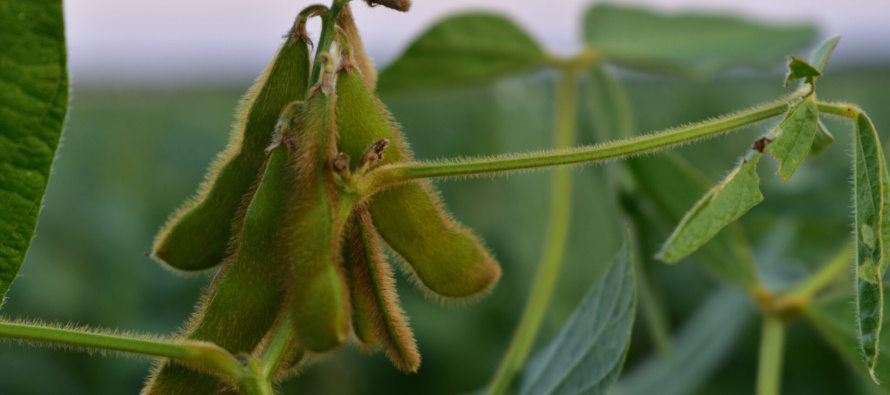Insecticide Termination Guidelines for Cotton and Soybean in Mississippi

Related Articles
- Calcium and Magnesium For Mississippi Crops 1
- March 11 Precision Agriculture Workshop 0
- Ground Speed Affects Spray Droplet Deposition 0
Latest Tweets
As crops across Mississippi approach maturity, it’s critical to understand the appropriate timing for terminating insecticide applications in both cotton and soybean. Making these decisions at the correct time helps avoid unnecessary input costs without risking yield losses. Below are the minimum thresholds based on crop development and insect pest pressure.
Cotton Insecticide Termination: Timing Based on NAWF + Heat Units
Cotton insecticide termination is driven by both crop growth stage and heat unit accumulation. The benchmark for termination is NAWF 5, defined as five nodes above the uppermost first position white flower, which signals physiological “cutout.” This stage marks the end of effective boll set; any subsequent flowers are unlikely to contribute meaningfully to yield.
After NAWF 5, heat units (DD60s) are used to determine when insect pressure no longer poses a risk to yield. These thresholds are:
-
Tarnished Plant Bug: NAWF 5 + 350 DD60s
-
Bollworm: NAWF 5 + 350 DD60s
-
Spider Mites: NAWF 5 + 350 DD60s
-
Soybean Looper: NAWF 5 + 350–400 DD60s
-
Stink Bugs: NAWF 5 + 450 DD60s
-
Fall Armyworms: NAWF 5 + 500–550 DD60s
Preliminary graduate student research suggests that NAWF 5 + 350 DD60s roughly corresponds to NAWF 2, though this will vary across the state. Be sure to monitor DD60 accumulations using the Mississippi State University Delta Agricultural Weather Center.
Soybean Insecticide Termination: Based on Reproductive Growth Stages
Soybean insecticide termination timing is tied closely to reproductive stages—particularly R6 (full seed) and R7 (beginning maturity). Understanding where you are in this window is essential, as it helps determine when insecticide applications are no longer economically justified.
-
Podworms (Corn Earworm): Terminate at R6
-
Stink Bugs:
-
General: Terminate at R6.5 (approximately 7 days after R6)
-
Redbanded Stink Bug: Terminate at R7, unless adverse weather threatens seed quality
-
-
Defoliating Caterpillars (Soybean Looper, Green Cloverworm, Velvetbean Caterpillar, Saltmarsh Caterpillar): Terminate at R6.5
-
Armyworms: Terminate at R6.5
-
Bean Leaf Beetles: Terminate at R6.5
Growth Stage Definitions:
-
R6: Seed completely fills the pod cavity
-
R6.5: Seed begins to separate from the pod membrane (typically 7–10 days after R6)
-
R7: One pod on the plant reaches mature color
Note: On indeterminate varieties, observations should be taken from the upper four nodes. On determinate varieties, they can be taken from any pod on the plant.
Final Thoughts
The early-planted cotton and soybean fields are quickly approaching insecticide termination thresholds. By adhering to these guidelines, growers can reduce unnecessary applications, and optimize profitability.
Always base termination decisions on:
-
Plant growth stage
-
Pest presence and pressure
-
Weather conditions
-
Local DD60 accumulation




Let me tell You a sad story ! There are no comments yet, but You can be first one to comment this article.
Write a comment